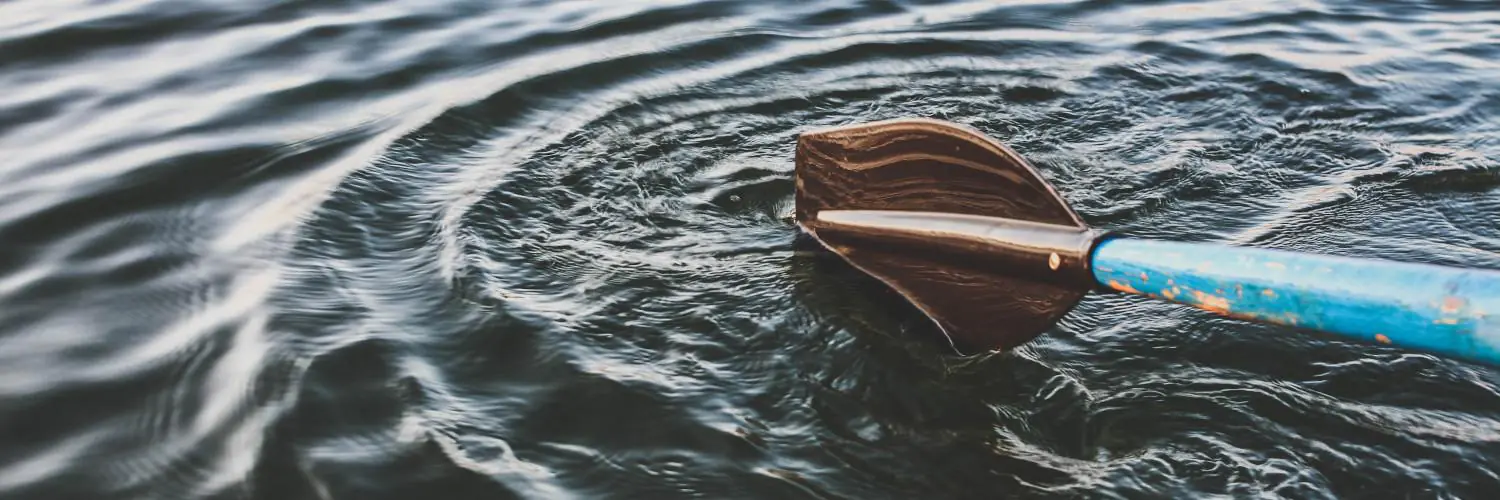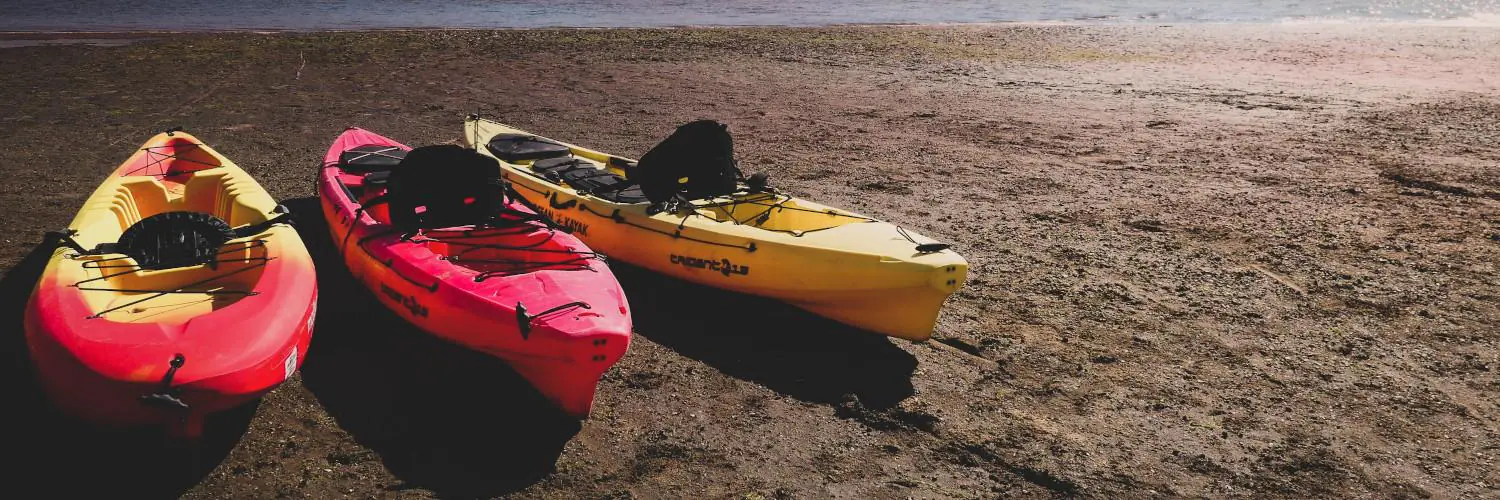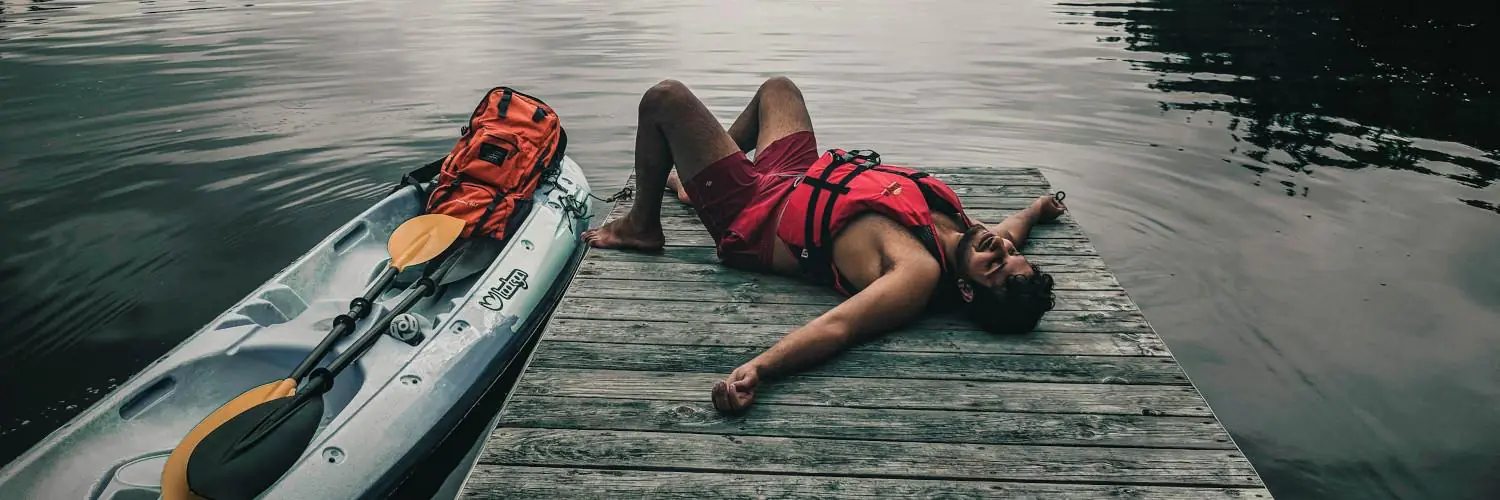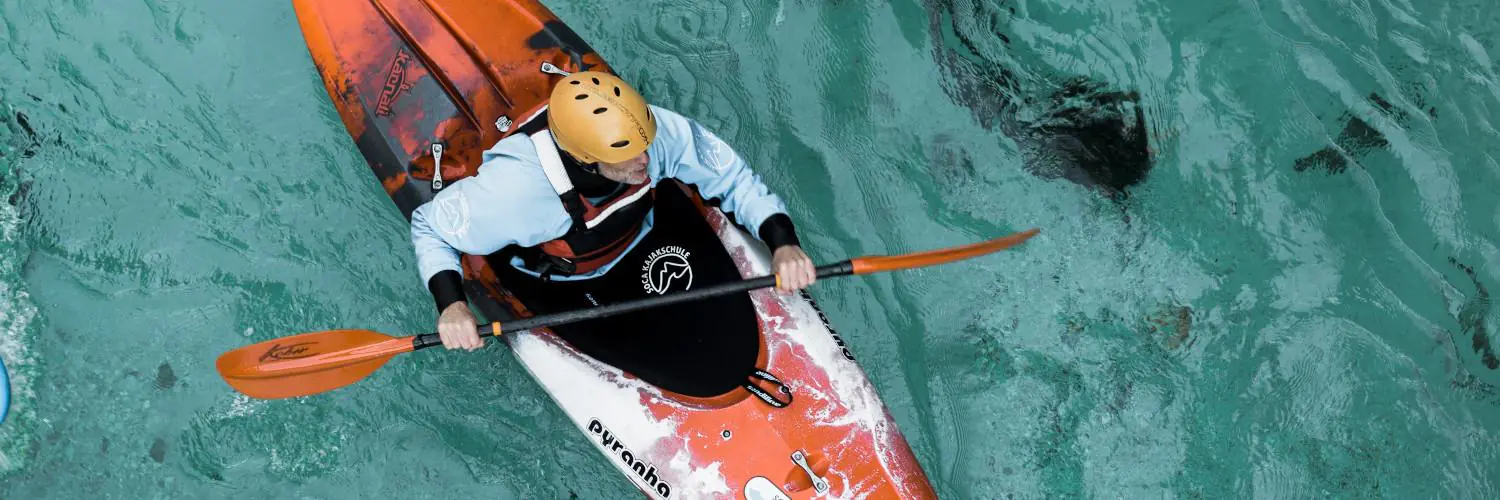A skeg is a small fin-like blade attached to the bottom rear of a kayak. It helps the kayak track straighter in windy conditions or rough water. Unlike a rudder, a skeg is fixed and doesn’t move from side to side. Many kayaks have retractable skegs that can be pulled up when not needed.
Skegs serve an important role in kayak performance. They work by resisting sideways movement of the stern, keeping the kayak pointed forward. This makes paddling easier and more efficient, especially when dealing with crosswinds or currents. Kayakers can adjust retractable skegs to find the right balance between tracking and maneuverability.
While not all kayaks have skegs, they are common on sea kayaks and touring kayaks. Some paddlers prefer the simplicity of a skeg over a rudder system. Skegs require less maintenance and are less likely to be damaged during transport or beach landings. For many kayakers, a skeg offers just enough directional control without added complexity.
Table of Contents
Understanding Skegs in Kayaking
Skegs play a key role in kayak control and stability. They help paddlers navigate different water conditions and improve their kayaking experience.
Purpose and Functionality
A skeg is a fin-like part that sticks out from the bottom of a kayak. Its main job is to keep the kayak going straight. This is called tracking. Skegs help fight wind and currents that try to push the kayak off course.
Skegs also stop the kayak from swaying side to side. This makes paddling easier and more stable. They work best in open water and windy spots.
When a skeg is down, it makes the kayak harder to turn. This can be good or bad depending on what the paddler wants to do.
Types of Skegs
There are two main types of kayak skegs:
- Fixed skegs: These are always in place and can’t be moved.
- Retractable skegs: These can be pulled up or pushed down as needed.
Fixed skegs are simple and don’t break easily. Retractable skegs offer more control. Paddlers can adjust them based on water and wind conditions.
Retractable skegs sit in a skeg box when not in use. This box is built into the kayak’s hull.
Comparing Skegs, Rudders, and Hull Design
Skegs and rudders both help with kayak control, but they work differently:
- Skegs: Stay in one spot, help with tracking
- Rudders: Can move side to side, help with steering
A kayak’s hull shape also affects how it moves in water. Some hulls are made to track well without a skeg. Others need a skeg for better control.
Rudders are better for quick turns. Skegs are better for going straight. The best choice depends on the type of kayaking and water conditions.
Some kayaks use both a skeg and a rudder. This gives paddlers more options for control in different situations.
The Impact of Skegs on Kayak Performance
Skegs play a crucial role in enhancing kayak performance. They help paddlers maintain control and direction in various water conditions.
Stability and Tracking
Skegs improve a kayak’s stability and tracking. When extended, the fin-like blade on the stern keeps the kayak moving straight. This reduces side-to-side swaying, known as “body roll.”
Paddlers find it easier to maintain their course with a skeg. The kayak resists veering off track, even in choppy waters. This stability allows for more efficient paddling and less energy wasted on course corrections.
Skegs are especially useful for longer kayaks. These boats tend to track well but can be hard to turn. A retractable skeg gives paddlers control over their boat’s behavior.
Handling Windy Conditions and Currents
Skegs shine in challenging weather and water conditions. They help kayaks resist weathercocking, which is when wind pushes the bow off course.
In crosswinds, paddlers can adjust the skeg to counteract drift. A fully lowered skeg keeps the stern anchored, allowing the kayak to cut through the wind. This reduces the need for constant corrective strokes.
Skegs also aid in navigating currents. They provide extra resistance against water flow, helping maintain a steady path. This feature is valuable in rivers or tidal areas where currents can push kayaks off course.
For beginners and experts alike, skegs make paddling in tough conditions more manageable and enjoyable.
Kayak Skeg Design and Features
Kayak skegs come in different designs with unique features to improve tracking and control. The main types are fixed and retractable skegs, each with their own benefits. Skeg materials and control methods also vary between kayak models.
Fixed vs. Retractable Skegs
Fixed skegs are built into the kayak hull and cannot be moved. They provide constant tracking assistance but may catch on obstacles in shallow water. Retractable skegs can be raised or lowered as needed. This allows paddlers to adjust for changing conditions.
Retractable skegs offer more flexibility. Paddlers can deploy them in windy conditions or when more directional stability is needed. In calm waters or shallow areas, the skeg can be retracted to reduce drag and improve maneuverability.
Fixed skegs are simpler and require less maintenance. They work well for kayaks used mainly in open water. Retractable skegs are better for varied conditions but need more care to prevent jamming.
Skeg Control Mechanisms
Retractable skegs use different control systems. Slider controls are common. A lever near the cockpit moves the skeg up and down. Some kayaks use a rope and pulley system instead.
Foot pedals offer hands-free skeg control. Paddlers can adjust the skeg position while keeping both hands on the paddle. This is useful in choppy water or when quick adjustments are needed.
Advanced kayaks may have hydraulic controls for smooth, precise skeg movement. These systems are more complex but offer greater control over skeg position.
Materials and Durability
Skegs are often made of tough plastic or fiberglass. These materials resist impacts and corrosion. Some high-end kayaks use carbon fiber skegs for reduced weight and increased strength.
Metal parts in retractable skeg systems should be stainless steel or marine-grade aluminum. This prevents rust in saltwater. Cables and ropes need to be strong and UV-resistant.
Regular maintenance keeps skegs working well. This includes rinsing with fresh water after use in salt water. Paddlers should also check for debris in retractable skeg boxes. Lubricating moving parts helps prevent sticking.
Installation and Use of Skegs
Skegs help kayaks track straight in windy conditions. They can be added to existing kayaks or come built-in on some models. Proper installation and use are key for getting the most benefit.
Installing a Skeg System
Adding a skeg to a kayak takes some work but can be done at home. First, pick a spot near the back of the kayak. Clean this area well. Mark where the skeg will go. Cut a hole for the skeg box if needed. Use marine glue to attach the skeg base. Let it dry fully.
For retractable skegs, install the control cable. This runs from the skeg to the cockpit. Make sure it moves smoothly. Test the skeg to ensure it goes up and down easily. Seal any holes you made to keep water out.
Operating a Skeg in Various Water Conditions
Skegs work best in wind and waves. In calm water, keep the skeg up. This makes turning easier. As wind picks up, lower the skeg partway. This helps the kayak go straight.
In strong crosswinds, lower the skeg fully. This keeps the back of the kayak from blowing sideways. In choppy water, a partly lowered skeg can help. It adds stability without making steering too hard.
For rough waters, adjust the skeg as needed. More skeg means more tracking but less turning. Less skeg allows quicker turns but less straight-line control. Practice to find the right balance for different conditions.
Choosing the Right Skeg for Your Kayaking Adventure
Picking the right skeg can make a big difference in your kayaking experience. It helps your kayak track straight and improves handling in different water conditions.
Matching Skeg to Kayaking Activities
For touring kayaks, a longer skeg works well. It gives better tracking on long trips. Recreational kayaks often use shorter skegs. These are good for calm waters and short trips.
If you like kayaking in windy areas, look for a larger skeg. It will help keep your kayak on course. For rivers or tight spaces, a smaller skeg is better. It won’t catch on rocks or plants.
Beginners might want a fixed skeg. It’s simple to use and always there when needed. More experienced paddlers may prefer an adjustable skeg. This lets them change how much the skeg affects their kayak’s movement.
Considerations for Different Kayak Models
Sit-on-top kayaks often have built-in skegs. These are usually small and work well for calm waters. Sit-inside kayaks may have drop-down skegs. These can be raised when not needed.
Some kayaks come with a skeg box. This lets you add or remove a skeg as needed. It’s a good option if you use your kayak in different places.
Fishing kayaks might need a special skeg. Look for one that won’t tangle fishing lines. Some kayaks use a rudder instead of a skeg. Rudders can turn and offer more control, but they’re more complex.
Always check if a skeg will fit your kayak model before buying. Some kayaks need special fittings or modifications to add a skeg.








